Kenneth Atchity's Blog, page 222
December 5, 2012
Clint Hill
Published on December 05, 2012 00:00
STORY MERCHANT CLIENT DENNIS WALSH'S NOBODY WALKS STELLAR REVIEW ON KIRKUS

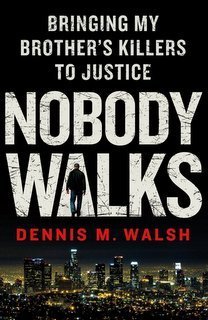
NOBODY WALKS
Bringing My Brother's Killers to Justice
Author: Walsh, Dennis M.
Review Issue Date: December 1, 2012
Pages: 304
Price ( Hardcover ): $26.99
Publication Date: February 5, 2013
ISBN ( Hardcover ): 978-1-250-00548-9
Category: Nonfiction
Pulpy, engrossing account of losing a family member to a senseless murder and retribution delivered through the criminal justice system.
Attorney Walsh was the only one among his four brothers to follow the straight-and-narrow path, perhaps due to the example set by their father, a Cleveland cop turned mobster. But none of them were prepared for the death of Chris, the youngest, at the hands of fellow denizens of the meth-and-gangs subculture on the fringes of Southern California’s pornography business. Walsh lived a sibling’s nightmare, asked to identify Chris’ decaying body. Street gossip quickly pinpointed the killer, David Steinberg, Chris’ former roommate, who was an associate of white supremacist prison gangs. Despite fears that he might pre-emptively sabotage eventual prosecution, Walsh began sniffing around Chris’ friends, a motley group of drug users, porn stars and entertainment-industry hangers-on. Many agreed to cooperate with him, given the implied threat of his more criminally inclined brothers’ thirst for vengeance. The narrative is sensibly straightforward, following the turns as police, prosecutors and Walsh make efforts to gather evidence on, arrest and successfully prosecute Steinberg and his cronies. As the author himself might agree, he is in some ways too close to the material. The narrative is populated by a surfeit of underworld figures who don’t really come alive as fully developed characters, but instead seem caricatures of seamy decrepitude. Still, Walsh captures the arc of his family’s involvement in an act of senseless malice, calling into question the cultural endurance of macho violence within certain subcultures and the difficulty of holding men responsible for horrific acts within the legal system’s overtaxed framework.
Gritty, effective, personalized tale of the outlaw lifestyle and its consequences.

Published on December 05, 2012 00:00
December 3, 2012
Suspense Magazine Reviews Story Merchant Client Dennis M. Walsh's Nobody Walks

“Nobody Walks: Bringing My Brother’s Killers to Justice” by Dennis M. Walsh
Every once in a great while, a true crime is written that pulls at the heartstrings, while it also provides a tale of suspense that will be remembered for a good long time. This is that story.
The complete and utter anguish of a family that loses a son and brother is the subject that this author takes on. Being a criminal defense attorney, Mr. Walsh valiantly tells the story in true ‘Technicolor,’ of his youngest brother’s death and how the family came together, stayed within the law and were able to bring the killers to justice.
It was 2003, when Christopher Walsh was found in a storage locker stuffed into a trash can. As most often happens, the murder investigation slowed down and almost came to a standstill. It took seven long months for the authorities to file charges, and many years to get the case to trial.
When the body was first found, Dennis Walsh announced to one and all that he would keep his brother’s murder alive and not let it become a cold case. And truer words had never been spoken. As the story unfolds, readers see that the Walsh family was close, but unfortunately the father—once a policeman—left the force and got involved with the underworld along with the rest of his sons, except for Dennis. It seems that Dennis was the only son who did not turn to an unsavory path that would make him a criminal. Perhaps that was fate working, considering Dennis took the job of solving his brother’s murder upon his shoulders, and went from suspect to suspect asking questions, becoming one with the jail birds and the people who put them there, without breaking the law.
This is a very heart-wrenching story of a family that made sure justice was served, and readers will find themselves rooting for Dennis from the very beginning.

Published on December 03, 2012 00:00
December 2, 2012
Brett Battle's New Novel Ashes Now Available!

NOW OUT
Project Eden No. 4
ASHES
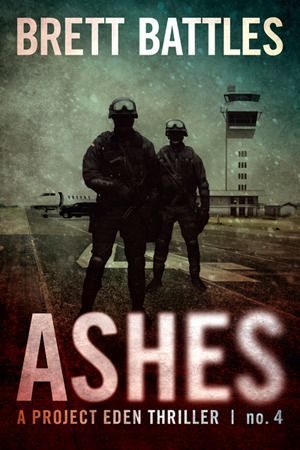

ASHES | Project Eden
No. 4
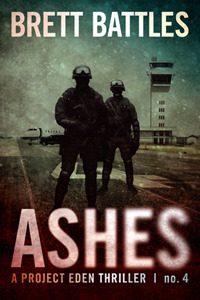 The Saga
The SagaContinues...
The hammer has fallen. The deadly Sage Flu has been
unleashed. The scramble for survival is in full force.
Martina Gable and her family escaped to a secluded mountain
cabin in hopes of avoiding the death sweeping the desert valley below, but
have they gone far enough?
Dominic Ray, manager of a tropical, private island resort,
has a dream job. The weather, the food, the drinks, the people—life
couldn't be better. What he didn’t expect—what no one could have
expected—was that his good life was about to disappear.
In a sea of the sick and dying, Sanjay and Kusum desperately
search for a place beyond Mumbai where they and the group they are leading
can be safe, and where they can prepare for what the future may bring.
Brandon Ash wants nothing more than to be with his father
and sister, but there is something waiting for him on a deserted,
snow-covered highway. Something that may mean the reunion will never
happen.
As Daniel Ash, Brandon's father, lies unconscious from the
serious wounds he suffered while hunting for his son, his daughter Josie
realizes it's up to her to find her brother and bring him home. But the
search will be a dangerous one, that will take her far from home.
And then there is Project Eden, watching the plague kill as
they had planned, even as they prepare to activate the next phase.
What will you do to survive?
Ashes is best read after completing volumes 1-3 (Sick, Exit
9, and Pale Horse)
Where
to find ASHES:
Kindle
US • Nook
Kindle
UK • Kindle
Germany • Kindle
France
Kindle
Spain • Kindle
Italy • Kindle
Japan
Check
Amazon and Barnes & Noble in the
next
week or so for the trade paperback version.


Published on December 02, 2012 13:15
December 1, 2012
49 years after JFK assassination, former Secret Service agent Clint Hill recounts tragedy in book
By Bob Barnard, @bobbybbarnard
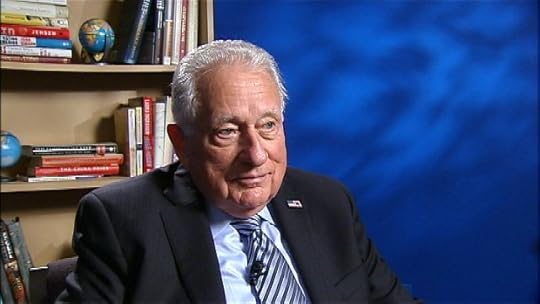
On Thursday, our nation is celebrating Thanksgiving - and marking the 49th anniversary of the assassination of President John F. Kennedy.
One man who was there in Dallas has written a book about that dark November day in 1963, and the woman he grew to know and care for in his role as a Secret Service agent.
Clint Hill is the man in the dark suit seen in the historic Zapruder film that captured in the assassination in color. Hill was on the follow-up car behind the presidential limousine in Dealey Plaza when the shots rang out. He raced to the back of the limo where he met a scrambling Jackie Kennedy as she tried to recover portions of the president's brain which had scattered onto the car's trunk.
"I just wish I could have been able to get their a little bit quicker," Hill tells FOX 5 News. "Would have made a difference."
While Hill struggled with deep feeling of guilt, Mrs. Kennedy wanted him there by her side.
"She had asked if I could be assigned to stay with her. And I agreed," Hill says. "I wanted to do that for that first year. I wanted to be with her. Make sure she got adjusted as well as she could, get situated."
Hill's book, "Mrs. Kennedy and Me," details the four years he spent as the special agent in charge of her security.

Published on December 01, 2012 00:00
November 30, 2012
Story Merchant Client James A. Hillebrecht's Interview on My Addiction
Author Interview – James A Hillebrecht - The Paladin Trilogy
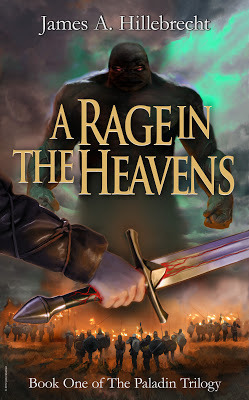
Jim Hillebrecht has been a writer for
almost thirty five years. He has produced almost a dozen books within this time
which ranges between techno-thrillers, paranormal drama and fantasy.
People have met James’s Trilogy with
much liking judging from comments that range between “very exciting to must add
this author on your favourite list.” It’s always an honour for me to host
published authors, especially those who are met by society with awe.
Welcome to the blog today James from
sunny South Africa. The festive season is about to hit off
with just over 5 five days to go. James’s work is the perfect relax read for
these times.
James. I was extremely humbled by your
short author note on your blog. Can you share this intimate view with the rest
of our readers?
Creative writing,
at its heart, is the sharing of emotional experiences between the writer and
the reader, using the characters as the vehicles for those emotions. Our literature is rich in emotions like hate,
vengeance, love, lust, anger, and joy, but in my experience, we tend to shy
away from the heroic. Or rather, we
escalate it to the extra-human level of a Conan or an Indiana Jones, a special
trait that raises them above common humanity.
But I believe the heroic resides within all of us, something that goes
beyond simple courage which is the tool for heroism, much as knowledge is the
tool for wisdom.
The main
character of the books is Darius, a Paladin who is a holy warrior quested to
confront great evil whenever it is unleashed upon the world. But it is not the task of the Paladin to
single-handedly destroy this evil. As
Darius’ mentor explains to him in the 1st chapter of the 1st
book, “Did you think that you and my
other sons were only to hack and slay?
No, you were to be the examples for Mankind, the proof that there was a
better way than the paths of darkness, the heroes that might stir men’s' souls
to valour.” This is the very heart
of the entire Trilogy, that when danger and intrigue and confusion begin to
sway people into compromising with that evil, it is Darius who helps them to
find the hero within themselves.
Can you tell our readers what made you
start writing?
I think I have
always been interested in story-telling, and it seems to be a natural outlet
for a restless imagination. The Trilogy,
however, has a very different root. I
began playing the fantasy role-playing game (RPG) Dungeons and Dragons back in
the Summer of 1978 with a group of close friends, and we are still involved in
campaigning in the same world today. In
1989, I took an informal college course on how to get published, and while the
curriculum was a fairly standard introduction to query letters, the instructor
did assign one fascinating project:
compose a query letter for the project you will never write. At the time, I was writing “serious” fiction,
and the idea of working on a sword-and-sorcery fantasy was the furthest thing
from my mind. So I wrote the query
letter, and I fell in love with the idea.
The first book of the Trilogy, A Rage in the Heavens, was the result.
Interestingly,
the book initially could not find an audience, at least partially because it
was the first book of an unfinished Trilogy.
My agent at the time was not accustomed to handling fantasy, and after
about a year of collecting rejection letters, I finally put it up on the
shelf. Then, around 2002, my eldest
Daughter, Barbara, pulled down the manuscript, read it, and insisted that I
complete the other two books. And the
Paladin Trilogy came to fruition.
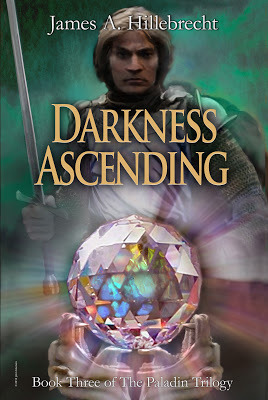
Do you have a specific genre you are
writing for?
The Paladin
Trilogy is a sword-and-sorcery, high fantasy work that is grounded in the rich
heritage of Lord of the Rings and the various RPG systems. I was hoping to hit that ideal middle-ground
between adults and teen-agers, and while the books appear to have been very
well received by the adult audience, the teen-aged response seems to be
mixed. The relentless action of the
books attracts some, but the political intrigue and the complex characters
appear to be a bit much for others.
The Paladin trilogy consists of three
novels. Can you tell our readers a bit more about them?
The first book, A
Rage in the Heavens, was written in the early 90s, and by its nature, it is a
simpler story, the tale of an aging fighter called out of a well-earned
retirement to confront a barbarian invasion that is led by an unstoppable titan
known as the Juggernaut. But unknown to
him, his teen-aged Daughter, Shannon, has also heard a distant call, and she
follows in his footsteps to where the war rages.
In the second
book, Upon This World of Stone, the simplicity of the first book darkens and
complicates as more details become clear.
The Juggernaut is a weapon of the Ancient Wars before the birth of Men,
and it has been set free by the tyrant of the barbarians after he came into
possession of a demonic sceptre that has given him incredible powers. But while the purpose of the tyrant to
conquer and pillage is crystal clear, the intent of the demon sceptre is still
shrouded in mystery
In the third and
final book, Darkness Ascending, the various strings of the story come together
in a compelling Gordian Knot as the ancient struggle between the gods begins to
emerge once more. Here, Darius’ ability
to inspire is put to its final test as the ruthless and cunning thief, Adella,
and Darius’ Daughter Shannon find themselves pulled into the final
confrontation where the devastating plans of the gods themselves are revealed –
and which only they have even a chance counter.
Your favourite character within them?
What makes him/her dear to you?
That’s almost
like asking a parent which is their favourite child. These characters have been with me for over
20 years, and they are now all old friends.
But I have to go with the Paladin Darius and the Thief Adella, because
their interaction is a wonderful part of the chemistry of the three books. They come from radically different
backgrounds, and their choices have put them on a collision course, especially
since Adella wields the evil sword Bloodseeker, the absolute antithesis of
Darius’ sword Sarinian. As Darius tells
her early on “We are friends the world has cast as foes”, and when they are
able to put their differences behind them, they make an extremely effective
team, complementing the others’ weaknesses and augmenting each others’
strengths.
The humour and
the conflict between them is a fun sub-plot throughout the books, as is the
lurking and forbidden romantic tension.
It is interesting that when the question is asked “should Adella and
Darius end up together?”, the reaction is split perfectly down gender
lines. Every woman who has read the
books responds with a resounding “Yes!” while male readers inevitably answer
with an equally emphatic “No!” I’ve
occasionally felt I should have two different endings f I want to keep everyone
happy.
On your website you have a link that
refers to “The Campaign” can you tell our readers a bit more about it?
“The Campaign”
refers to the RPG world that I and my friends have been designing, developing,
and evolving for more than 30 years. A
role-playing game, simply put, is when players generate characters for a
medieval setting, and the game-master designs all the intricacies of that world
and then allows the players to adventure in that environment. The current group of characters was
introduced in 1981, and we have had some epic playing sessions, many of which
will start on a Friday night and end in exhaustion on Sunday afternoon. My earlier contention that the heroic can be
found within all of us is sometimes demonstrated by the valour of these
characters when standing against an overwhelming evil – some things you simply
cannot play act.
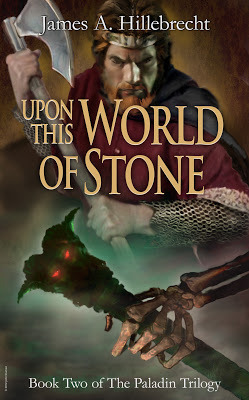
People have commented on your rather
intriguing covers can you tell us a bit more about the mastermind behind them?
John Blumen and I
met in our 9th grade homeroom, and we have been fast friends ever
since. John was the silent, watchful
artist, and I was a history nut with a real fascination for all things
nautical. When there was a school
announcement congratulating John on his construction of a model of the USS
Constitution, I made a point of seeing it and was astounded not just by the
intricate detail of the vessel but by its flawless historical accuracy. I fell in love with his work on the spot, and
John, I think, was just relived to find somebody who knew the difference
between an American frigate and a Spanish galleon.
Ever since I
wrote the first sentence of A Rage in the Heavens, I have dreamed of John
designing the covers of the Trilogy.
John has developed into a successful commercial artist whose credits
include covers for major publishers like Tor and Penguin, but he has always
cautioned me that publishers often have their own stable of illustrators and
are unlikely to even look at covers from “the author’s friend”. StoryMerchant gave me the freedom to use the
illustrator of my choice, and John has done a superb job of creating covers
that work both as a thumbnail for e-books and as the full-blown jackets of the
paperbacks. It is my heart-felt hope
that people will judge my books by their covers.
People have complemented your works by
saying it’s intriguing especially to those that like political intrigue,
medieval imagery and clever characters how have you dealt with bad reviews?
Well, fortunately,
there have been no formal bad reviews to date, but all of my books go through
an exhausting series of proof-reads by a loyal following of tireless
friends. Everything is on the table with
the avowed purpose of helping to lift the work to the next level, whether that
be to acceptable to good or to very good.
Criticism is a priceless opportunity to improve, and it only becomes a
problem if you think your work has reached the pinnacle where no further
improvement is possible. I expect and
hope that I will never reach that point.
Where can readers find your works and
stay in contact?
My web site can
be reached at:
http://www.jamesahillebrecht.com/index.html
You’ll find the
Prologue to the first book there which you can read for free in order to get a
flavour of the Trilogy. The books
themselves are available on Amazon/Kindle as both e-books and large
paperbacks.
A Rage in the Heavens
http://dld.bz/bSznP (e-book)
http://dld.bz/bSzzw (paperback)
Upon This World of Stone
http://dld.bz/bSmNv (e-book)
http://dld.bz/bSznB (paperback)
Darkness Ascending
http://dld.bz/bSzy7 (e-book)
http://dld.bz/bSzyG (paperback)
Plans for the future?
I had originally envisioned two additional Trilogies set in the
same world as The Paladin only with different characters. But sometimes the pen just goes off in a
totally unexpected direction, and I’ve learned to write what is clearest in my
head. So I’m currently working on an
immediate sequel to the Trilogy, starting right after the last scene of
Darkness Ascending, and I’m simply delighted with how it’s going. At the current rate, it will take about a
year to finish, but my experience has been that if it’s fun to write, it’s
going to be fun to read.


Jim Hillebrecht has been a writer for
almost thirty five years. He has produced almost a dozen books within this time
which ranges between techno-thrillers, paranormal drama and fantasy.
People have met James’s Trilogy with
much liking judging from comments that range between “very exciting to must add
this author on your favourite list.” It’s always an honour for me to host
published authors, especially those who are met by society with awe.
Welcome to the blog today James from
sunny South Africa. The festive season is about to hit off
with just over 5 five days to go. James’s work is the perfect relax read for
these times.
James. I was extremely humbled by your
short author note on your blog. Can you share this intimate view with the rest
of our readers?
Creative writing,
at its heart, is the sharing of emotional experiences between the writer and
the reader, using the characters as the vehicles for those emotions. Our literature is rich in emotions like hate,
vengeance, love, lust, anger, and joy, but in my experience, we tend to shy
away from the heroic. Or rather, we
escalate it to the extra-human level of a Conan or an Indiana Jones, a special
trait that raises them above common humanity.
But I believe the heroic resides within all of us, something that goes
beyond simple courage which is the tool for heroism, much as knowledge is the
tool for wisdom.
The main
character of the books is Darius, a Paladin who is a holy warrior quested to
confront great evil whenever it is unleashed upon the world. But it is not the task of the Paladin to
single-handedly destroy this evil. As
Darius’ mentor explains to him in the 1st chapter of the 1st
book, “Did you think that you and my
other sons were only to hack and slay?
No, you were to be the examples for Mankind, the proof that there was a
better way than the paths of darkness, the heroes that might stir men’s' souls
to valour.” This is the very heart
of the entire Trilogy, that when danger and intrigue and confusion begin to
sway people into compromising with that evil, it is Darius who helps them to
find the hero within themselves.
Can you tell our readers what made you
start writing?
I think I have
always been interested in story-telling, and it seems to be a natural outlet
for a restless imagination. The Trilogy,
however, has a very different root. I
began playing the fantasy role-playing game (RPG) Dungeons and Dragons back in
the Summer of 1978 with a group of close friends, and we are still involved in
campaigning in the same world today. In
1989, I took an informal college course on how to get published, and while the
curriculum was a fairly standard introduction to query letters, the instructor
did assign one fascinating project:
compose a query letter for the project you will never write. At the time, I was writing “serious” fiction,
and the idea of working on a sword-and-sorcery fantasy was the furthest thing
from my mind. So I wrote the query
letter, and I fell in love with the idea.
The first book of the Trilogy, A Rage in the Heavens, was the result.
Interestingly,
the book initially could not find an audience, at least partially because it
was the first book of an unfinished Trilogy.
My agent at the time was not accustomed to handling fantasy, and after
about a year of collecting rejection letters, I finally put it up on the
shelf. Then, around 2002, my eldest
Daughter, Barbara, pulled down the manuscript, read it, and insisted that I
complete the other two books. And the
Paladin Trilogy came to fruition.

Do you have a specific genre you are
writing for?
The Paladin
Trilogy is a sword-and-sorcery, high fantasy work that is grounded in the rich
heritage of Lord of the Rings and the various RPG systems. I was hoping to hit that ideal middle-ground
between adults and teen-agers, and while the books appear to have been very
well received by the adult audience, the teen-aged response seems to be
mixed. The relentless action of the
books attracts some, but the political intrigue and the complex characters
appear to be a bit much for others.
The Paladin trilogy consists of three
novels. Can you tell our readers a bit more about them?
The first book, A
Rage in the Heavens, was written in the early 90s, and by its nature, it is a
simpler story, the tale of an aging fighter called out of a well-earned
retirement to confront a barbarian invasion that is led by an unstoppable titan
known as the Juggernaut. But unknown to
him, his teen-aged Daughter, Shannon, has also heard a distant call, and she
follows in his footsteps to where the war rages.
In the second
book, Upon This World of Stone, the simplicity of the first book darkens and
complicates as more details become clear.
The Juggernaut is a weapon of the Ancient Wars before the birth of Men,
and it has been set free by the tyrant of the barbarians after he came into
possession of a demonic sceptre that has given him incredible powers. But while the purpose of the tyrant to
conquer and pillage is crystal clear, the intent of the demon sceptre is still
shrouded in mystery
In the third and
final book, Darkness Ascending, the various strings of the story come together
in a compelling Gordian Knot as the ancient struggle between the gods begins to
emerge once more. Here, Darius’ ability
to inspire is put to its final test as the ruthless and cunning thief, Adella,
and Darius’ Daughter Shannon find themselves pulled into the final
confrontation where the devastating plans of the gods themselves are revealed –
and which only they have even a chance counter.
Your favourite character within them?
What makes him/her dear to you?
That’s almost
like asking a parent which is their favourite child. These characters have been with me for over
20 years, and they are now all old friends.
But I have to go with the Paladin Darius and the Thief Adella, because
their interaction is a wonderful part of the chemistry of the three books. They come from radically different
backgrounds, and their choices have put them on a collision course, especially
since Adella wields the evil sword Bloodseeker, the absolute antithesis of
Darius’ sword Sarinian. As Darius tells
her early on “We are friends the world has cast as foes”, and when they are
able to put their differences behind them, they make an extremely effective
team, complementing the others’ weaknesses and augmenting each others’
strengths.
The humour and
the conflict between them is a fun sub-plot throughout the books, as is the
lurking and forbidden romantic tension.
It is interesting that when the question is asked “should Adella and
Darius end up together?”, the reaction is split perfectly down gender
lines. Every woman who has read the
books responds with a resounding “Yes!” while male readers inevitably answer
with an equally emphatic “No!” I’ve
occasionally felt I should have two different endings f I want to keep everyone
happy.
On your website you have a link that
refers to “The Campaign” can you tell our readers a bit more about it?
“The Campaign”
refers to the RPG world that I and my friends have been designing, developing,
and evolving for more than 30 years. A
role-playing game, simply put, is when players generate characters for a
medieval setting, and the game-master designs all the intricacies of that world
and then allows the players to adventure in that environment. The current group of characters was
introduced in 1981, and we have had some epic playing sessions, many of which
will start on a Friday night and end in exhaustion on Sunday afternoon. My earlier contention that the heroic can be
found within all of us is sometimes demonstrated by the valour of these
characters when standing against an overwhelming evil – some things you simply
cannot play act.

People have commented on your rather
intriguing covers can you tell us a bit more about the mastermind behind them?
John Blumen and I
met in our 9th grade homeroom, and we have been fast friends ever
since. John was the silent, watchful
artist, and I was a history nut with a real fascination for all things
nautical. When there was a school
announcement congratulating John on his construction of a model of the USS
Constitution, I made a point of seeing it and was astounded not just by the
intricate detail of the vessel but by its flawless historical accuracy. I fell in love with his work on the spot, and
John, I think, was just relived to find somebody who knew the difference
between an American frigate and a Spanish galleon.
Ever since I
wrote the first sentence of A Rage in the Heavens, I have dreamed of John
designing the covers of the Trilogy.
John has developed into a successful commercial artist whose credits
include covers for major publishers like Tor and Penguin, but he has always
cautioned me that publishers often have their own stable of illustrators and
are unlikely to even look at covers from “the author’s friend”. StoryMerchant gave me the freedom to use the
illustrator of my choice, and John has done a superb job of creating covers
that work both as a thumbnail for e-books and as the full-blown jackets of the
paperbacks. It is my heart-felt hope
that people will judge my books by their covers.
People have complemented your works by
saying it’s intriguing especially to those that like political intrigue,
medieval imagery and clever characters how have you dealt with bad reviews?
Well, fortunately,
there have been no formal bad reviews to date, but all of my books go through
an exhausting series of proof-reads by a loyal following of tireless
friends. Everything is on the table with
the avowed purpose of helping to lift the work to the next level, whether that
be to acceptable to good or to very good.
Criticism is a priceless opportunity to improve, and it only becomes a
problem if you think your work has reached the pinnacle where no further
improvement is possible. I expect and
hope that I will never reach that point.
Where can readers find your works and
stay in contact?
My web site can
be reached at:
http://www.jamesahillebrecht.com/index.html
You’ll find the
Prologue to the first book there which you can read for free in order to get a
flavour of the Trilogy. The books
themselves are available on Amazon/Kindle as both e-books and large
paperbacks.
A Rage in the Heavens
http://dld.bz/bSznP (e-book)
http://dld.bz/bSzzw (paperback)
Upon This World of Stone
http://dld.bz/bSmNv (e-book)
http://dld.bz/bSznB (paperback)
Darkness Ascending
http://dld.bz/bSzy7 (e-book)
http://dld.bz/bSzyG (paperback)
Plans for the future?
I had originally envisioned two additional Trilogies set in the
same world as The Paladin only with different characters. But sometimes the pen just goes off in a
totally unexpected direction, and I’ve learned to write what is clearest in my
head. So I’m currently working on an
immediate sequel to the Trilogy, starting right after the last scene of
Darkness Ascending, and I’m simply delighted with how it’s going. At the current rate, it will take about a
year to finish, but my experience has been that if it’s fun to write, it’s
going to be fun to read.

Published on November 30, 2012 00:00
November 28, 2012
NEW DISCIPLINE FROM JEFF RIVERA FREE TO STORY MERCHANT FRIENDS
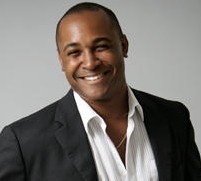
Success as a writer is 90% work and 10% talent. No matter how talented you are, if you do not do the work, if you do not roll up your sleeves, none of your dreams for greatness as a writer can ever come true. That's just reality.
The challenge is that today's writer is, quite frankly, distracted. It goes beyond simply wanting to wash your windows and walk the dog instead of writing.
Nowadays, the biggest time zapper is the Internet. Whether it's Facebook, Twitter or checking your email 400 times a day, every second you're playing on the Internet is one step further from your goal as a writer. In my book, A Writer's Time: Making the Time to Write, I talk about how imperative this step is.
That's why when I was introduced to a new tool my good friend Jeff Rivera is beta-testing, I had to share it with you. It is a software that will prevent you from using the Internet without finishing your daily word count.
If you're serious about your commitment to writing, I highly recommend it.
Download Write the Damn Thing now!

Published on November 28, 2012 00:00
November 27, 2012
Larry Thompson's Thriller Thursday Interviews Jock Miller About His New Thriller!
Fossil River — A new novel from Jock Miller

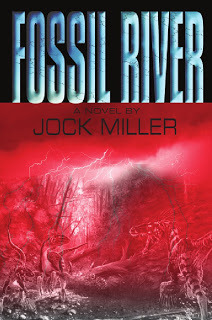
Podcast: Play in new window
| Download (Duration: 25:16 — 12.8MB)
A perfect energy storm that pits predatory dinosaurs against US Marines
Larry Thompson welcomes Jock Miller to Thriller Thursday to talk about his latest novel, Fossil River , an
exciting combination of science fiction (and fact) in a riveting story
story centered on an energy shortage that has it’s solution in the
Alaskan Wilderness. Jock Tells us how the story and novel came about,
as well as bit about his personal journey as a thriller writer.




Podcast: Play in new window
| Download (Duration: 25:16 — 12.8MB)
A perfect energy storm that pits predatory dinosaurs against US Marines
Larry Thompson welcomes Jock Miller to Thriller Thursday to talk about his latest novel, Fossil River , an
exciting combination of science fiction (and fact) in a riveting story
story centered on an energy shortage that has it’s solution in the
Alaskan Wilderness. Jock Tells us how the story and novel came about,
as well as bit about his personal journey as a thriller writer.

Published on November 27, 2012 00:00
November 26, 2012
AEI Client Noire's New Novel Is Available Now!
Noire's Sexy Little Liar is
IN STORES NOW!

Sexy Little Liar by Noire
WARNING!
This here ain't no romance
It's an urban erotic tale
When Gutta hits the bricks
Mink's gon' sho'nuff catch some hell!
It started out as just another ordinary scam
Until Mizz Mink discovered
They might really be her fam!
Mink is seeing dollar signs
She thinks she's got it made
She's counting up her duckets
Hoping Viceroy's 'bout to fade
But when a chick from Philly shows up
Lookin' like her twin
The competition's on,
So may the sexiest liar win!
A grip is on the line
Yo, what's a Harlem chick to do?
Here's another misadventure
In the life of Mink LaRue!

"Ain't no party like a New
York party!" Bunni slurred as we sat up in Club Wood getting toasted
up to the max. As usual the club was packed out with ballers and hustlers,
and chicks with plump titties and huge asses were workin' their pockets all
the way down to the last lint ball.
Me and Bunni were on one! We
were ballin' our asses off, and mad party-goers were giving up the props
and paying us our righteous respect. I started off buying rounds for all
the chicks that I usually stripped with, and by the time the getting got
good my ass was flying so high I bought the whole damn bar out!
Them long-throated chicks was
guzzling Krug and tossing back Hen-Hen like every liquore store in the city
of New York was about to go bone-dry. I chugged down my share of alky too,
but I was careful to watch my shit being poured from the bottle because the
last time I got tipsy in Club Wood, somebody had slipped me a tab and I got
caught up in a serious flimflam.
"Girlll," Bunni drawled
in her deep-fried ghetto twang. "Lil Bang and them got some real good
shit flowing in the back," she told me. "Chronic, sess, 'dro.
Shit, they got some good X back there too, girl. It's our first night back
in the city. Let's go for broke and get all the way live!"
Free head bangaz? Bunni didn't
have to tell me twice. I almost broke my damn neck climbing off the
barstool and hauling ass toward the back of the club. My swagger was on one
hundred as I shook my hips in my tiny-tasseled purple go-go skirt, and
niggas who had seen me rock the poles buck naked a thousand times still
couldn't keep their hands off my bangin' hips as I sashayed by.
We danced and grinded and got so
lifted that we broke daylight up in that camp, and when we finally crawled
back up to the front of the club all dry-mouthed and zooted, Perry and his
cleanup crew were putting the barstools up on the counter as they got ready
to mop down the gritty floors.
"Goddamn!" Our
rap-a-licious limo driver said as the three of us stumbled outside and he
squinted into the early-morning sun. He had hung hard with us the entire
night and probably puffed more yay and drank more liq than me and Bunni put
together. He dug in his uniform pocket and came out with his limo keys,
then wobbled on his feet as he held them shits up in the air and let 'em
dangle. "I'm fucked up like a muthafucka!
Which one of ya'll nasty bitches wanna drive?"

Get Your Copy Today!
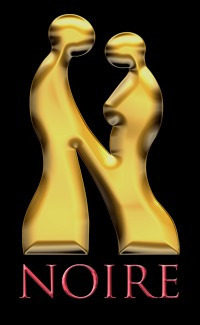
Urban Erotic Noire Publications







Published on November 26, 2012 00:00
November 23, 2012
Guest Post: 8 Ways to Get Reviews That Aren't Fake by Penny C. Sansevieri

We've always had a problem with "fake." Whether it was a fake Kate Spade handbag or a knock-off clothing line, fake has always been a part of our culture. Most of this is made popular by the "don't you want to have it, too?" mindset that often surrounds celebrities: "Get the dress Jennifer Aniston wore for only $200!" Most of us, however, can spot fake. Or, to help avoid litigation, many reputable companies offer knock-offs of celebrity Oscar gowns and what-not. Fake, however, is not limited to fashion anymore.
Now, fake and counterfeit has begun permeating the publishing industry. We've seen things like 35 Shades of Grey and other knock-off titles that seem to circumvent any legal challenges, but there's a new challenge on the frontier, that of fake reviews. Do you believe reviews? A majority of us don't, but more often than not we believed the consumer reviews. Not so much anymore, especially now when reviews can be bought, or in some cases, simply faked. The message seems to be: if you want to get noticed, you'd better be prepared to "fake it till you make it." That's a nice saying, in theory, but when you're talking about polluting an Amazon page with a bunch of dummy reviews, that's another story.
So, what's an author to do? I'm sure as time wears on it will be tempting to buy into this but what happens when we do? We end up with a cluttered market packed with "I loved this!" and we're left to wonder, did the person really love it and, even worse, did they even read it? We all want to be liked, or, rather, we want our work to be liked, but to what end?
Several years ago we were on a team retreat. At that time a savvy team member came to me and said, "We can't put our stock in reviews, these folks are inundated with books to look over, we need to find other channels." And so we did. Where we used to do review-centric programs (meaning that the success or failure of a marketing campaign depended on the number of reviews we got), we now offer campaigns that are balanced, and yes, we like to get reviews for our customers, but that's not always the best way to grow your market. Here is perhaps a different set of ideas (and maybe a few you've heard before) about getting exposure and (if you're lucky) getting reviews:
Stay engaged: I see a lot of folks who aren't engaged in the process or their reader. I'm not talking about running through your to-do list of marketing activities. I'm talking about staying engaged with your reader. Talking to them via your blog, Facebook, Twitter, Pinterest, LinkedIn, whatever. Your reader is your end user, you want reviews to get to them, but in the absence of reviews, guess what? Your outreach to your reader will have a far greater impact on your market and your sales.
Know the rules: The rules of the game are important. Part of what's so discouraging to bloggers (and eats away at their time) is that authors don't often take the time to know who to pitch. That's what makes paid reviews so tempting (among other things); you can send in a check, and then you get reviews. Real, honest, and thorough reviews take time, but keep this in mind: When this shakes out and presumably "consumer" reviews don't have the credibility they once did, where do you think authors will start to go? To the long-time, credible reviewers -- where it all started. So, get to know them now. They have a following, and people who read them know they can't be bought.
Start early: As with anything in marketing, start early. I'm going to run through some networking tips in another section but for now, start thinking in terms of early, early, early. How soon should you start? Six months at a minimum.
Review other books: Reviewing other people's books works great on a number of levels. First and foremost, it's important to support other authors in your market. You want reviews? Guess what? So do they. Get out and review their books; they'll appreciate the effort. Then, when it's time for your book to come out, let them know you're published, offer to send them a copy and (if they have the time) encourage a review. Keep in mind that they may or may not do it. You aren't trading reviews here; you're paying it forward.
Please and thank you: When was the last time you thanked someone for a review? If you haven't, you should. You'll write more books and may want to pitch them again, and even if you don't, saying thank you takes no work at all. Show them your appreciation. Consider this: Midwest Book Review has worked tirelessly to do reviews for years, they ask for nothing. Occasionally I'll get a letter from them saying, "if you want to help out, we could really use stamps." It's a small thing, with a huge impact. We're all in this together; help out the people who help so many others. Spread the word about the review, thank them, be gracious. You'll be glad you did.
Network: If the idea of networking makes you think of long, boring events where you hand out your cards like candies out of a Pez dispenser, take heart... it doesn't have to be like that. You can network on a variety of sites. Let's take LinkedIn for example, which is a great place to network with the media. Join groups in your area of expertise and contribute once a week or so, connect with media and bloggers in your market and then comment on their updates and posts. See? You don't even have to leave your house or, for that matter, attend some boring, colorless event to stay connected.
Social media contacts: When was the last time you went through your social media contacts, your Likes on Facebook, connections on LinkedIn? Part of your monthly networking outreach could be to send a quick note to 4 contacts on each social media site. Why? Because there's a big likelihood that you are connected to a blogger, bookstore buyer, or reviewer. You simply never know who is part of your network unless you take time to explore them!
Reviews aren't the end game: At the end of the day, reviews may not be the way to greater sales. Consider this: have you ever pitched yourself as a contributor to bloggers or blogs? Have you reached out to any newsletters in your industry? Have you considered excerpting your book online somewhere? Consider other options, brainstorm with other authors who are facing the same challenges.
While we love easy, easy isn't always best. A slew of five-star reviews on an Amazon page is now considered suspect. If you want to build your credibility you'll need to work harder. Consumers want authentic, they want transparency. By looking outside of the norm and really maximizing what you already have access to you, you can rise about the review noise and, in so doing, will begin to build much more credibility for yourself in the long-term. Credibility breeds respect, and that could bring you more legitimate reviews than you know what to do with.
We now live in a world where anyone can publish at anytime. With one click of a button you can become an author. But I believe the journey is much greater than that. It's more than just putting words on paper and hitting a few buttons. It's an effort and it requires time, patience, persistence and passion.
Someone asked me once "Wouldn't it be great if everyone loved your book?" Not really, I said. Not everyone's going to love what I write or what I do. I love the love, but it's in the criticism that I often find my biggest growth.

Published on November 23, 2012 00:00




